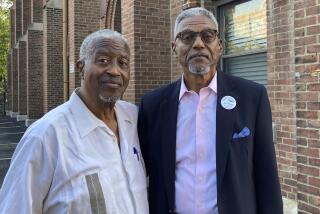Study: Agent Orange may have affected Air Force workers after Vietnam
Two dozen U.S. Air Force planes used to spray Agent Orange during the Vietnam War remained contaminated with the herbicide at levels that likely posed a health risk to some personnel who flew on them in the decade after the conflict, according to a new report.
The report could open the way to medical care and disability pay for hundreds of reservists who worked on the C-123 planes until 1982 and later developed certain medical conditions.
The Department of Veterans Affairs has denied nearly all their claims for compensation, arguing that any chemical residues in the planes had solidified and therefore were unlikely to pose a threat.
The VA commissioned the Institute of Medicine to review the scientific evidence in hopes of resolving the dispute.
The experts cited studies showing that dioxin — the toxic component of Agent Orange — does not simply remain on surfaces but instead slowly turns into a gas that can attach to dust particles and be redeposited.
“It is semi-volatile, and it will move around the cabin of the plane,” said Linda McCauley, dean of the nursing school at Emory University and a member of the committee that produced the report.
Swabs taken from the interiors of some planes between 1979 and 2009 showed levels of dioxin that exceeded international safety guidelines for workers in enclosed settings, according to the report.
The levels would have been at least that high when the reservists were using them.
After the war, the planes were reassigned to reserve units for medical and cargo transport and training exercises. Between 1,500 and 2,100 reservists flew on them over the next decade, until the planes were retired, destroyed or sold overseas.
Records of work schedules have not been found, making it impossible for the experts to estimate the frequency of exposure or who might be at the greatest risk.
Thomas Bandzul, a lawyer representing some of the former reservists, said he expects that the report will spur the VA to reverse its stance and begin offering compensation to potential victims.
“VA needs some good publicity,” he said. “If they push back on this, I’m really going to be surprised.”
VA officials said they are reviewing the report and will present their recommendations to top leaders.
Exposure to Agent Orange, which was used to clear jungle brush in Vietnam, has been a contentious political issue.
In any individual case, there is no way to say whether a disease was caused by exposure. Rather than adjudicate each claim, Congress and the VA instituted a blanket policy in 1991 that gave the benefit of the doubt to veterans who were possibly exposed.
Compensation was automatically awarded to any veteran who had served on the ground in Vietnam — even for just a day — and went on to develop certain conditions that have been linked to exposure.
At first, the list was limited to three relatively rare conditions.
Under pressure from veterans groups, the government has expanded the list of to include prostate cancer, heart disease, diabetes and other afflictions that affect tens of millions of civilians.
The policy has added hundreds of thousands of veterans to the $60-billion-a-year VA disability system.
Lawyers said several hundred claims are pending from former reservists who flew on C-123s after the war.
One is from 68-year-old Wes Carter of Ft. Collins, Colo., who has been trying to get compensation for heart disease, prostate cancer and diabetes.
He said he flew on the contaminated planes for 10 years, typically several times a month.
When he approached veterans groups for help with his disability claim, they told him, “I’m sorry, you were not in Vietnam,” he said.
Follow: @AlanZarembo for more national news
More to Read
Sign up for Essential California
The most important California stories and recommendations in your inbox every morning.
You may occasionally receive promotional content from the Los Angeles Times.











